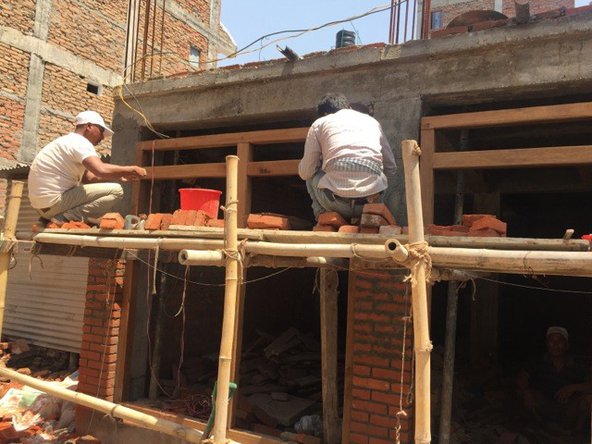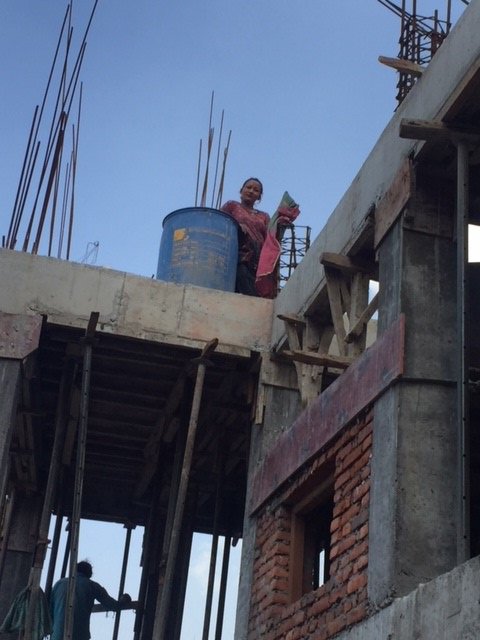Promoting self recovery after the Nepal earthquake
by Professor Caroline Knowles
26 Jun 2018
Cities & Infrastructure programme highlights
On 25 April 2015 an earthquake measuring 7.8 on the Richter scale hit Nepal. It was followed by hundreds of aftershocks and another major earthquake on 17 May, killing an estimated 9,000 people.
Although multiple international relief agencies descended in the immediate aftermath of the earthquake, their efforts are, by definition, short-term. The task of rebuilding lives and homes belong to a much longer and little-understood process – self-recovery – in which the activities, knowledge and understanding of local people play an important part.
Funded by the British Academy, Safer Self-Recovery: promoting resilient urban reconstruction after disasters, is directed by John Twigg of the Overseas Development Institute (ODI). It explores how people recover through their own efforts and resilience, how they prioritise rebuilding their lives, as well as how and what they know about rebuilding in more resilient ways against future seismic activity.
Stories in the rubble
Coordination with the local Care International team based in Kathmandu is vital in conducting this sensitive piece of research and gaining access to municipal stakeholders, who are in a position to do things differently in the future. The research reveals the importance of understanding the impact of the destruction and reconstruction of social, as well as built, domestic architectures in Kathmandu. The research team has collected the stories that lay in the rubble. Important in their own right as the voices of those with first-hand earthquake experience, these accounts would otherwise remain unrecorded and unheard. The stories collected by the team honour the traumas that are not otherwise voiced, except in private conversations by the residents of the city.

Rebuiling Bhaktapur. Photo by Caroline Knowles.
Doing recovery differently
These stories also reveal important lessons for municipal authorities about how earthquake recovery can be done differently, to minimise dislocation and advance recovery. First-person narratives have shown how rebuilding can be blocked by insufficient supplies of water and building materials, which fetch exorbitant prices and make rebuilding unaffordable and difficult. Other blocks revealed include shortages of finance and loans, and shortages of building labour. The team discovered women who had given up traditional activities like knitting and developed building skills instead, sometimes as semi-skilled labourers and in one case, developing advanced building and house design skills.

Rebuiling Bhaktapur. Photo by Caroline Knowles.
Improving communications
The team discovered how information on building in more earthquake-resilient styles circulated from municipal authorities to citizen builders. Radio broadcasts are important and effective forms of public dissemination. Broken social architectures provide further blocks in disputes between neighbours over inches of precious city land and the impact of rebuilding with steel and concrete on adjacent houses, which get damaged by the differences in strength. They also discovered and drew attention to disputes within families over how to distribute government rebuilding grants.
The female Mayor of Bhaktapur has just announced mediation services to help resolve disputes between neighbours and between family members that hold up rebuilding. The beginnings of a best practice toolkit for earthquake recovery – something we don’t yet have – lie in these stories. While every earthquake is slightly different, lessons like these can travel and adapt to new circumstances.
Caroline Knowles is Professor of Sociology at Goldsmiths University of London and Director of the British Academy's Cities & Infrastructure Programme. Caroline writes about migration and circulations of material objects – some of the social forces constituting globalisation. She is particularly interested in cities, having done research in London, Hong Kong, Beijing, Fuzhou, Addis Ababa, Kuwait City and Seoul.


